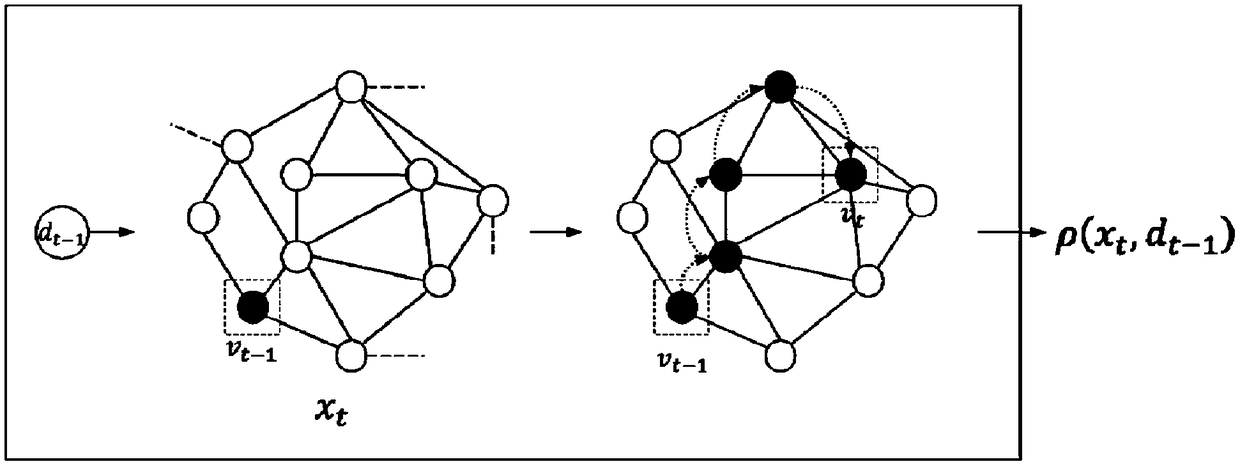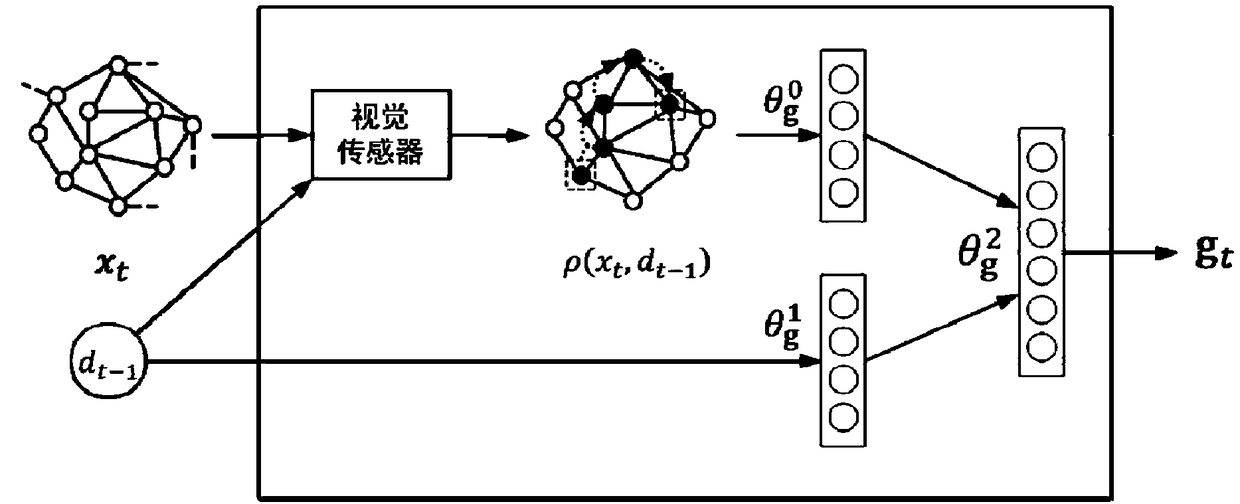Graph classification method of cyclic neural network model based on Attention
A technology of recurrent neural network and classification method, applied in the field of graph mining, which can solve the problems of lack of adaptability to different sizes of graphs, loss of effective modes, and high computational complexity
- Summary
- Abstract
- Description
- Claims
- Application Information
AI Technical Summary
Problems solved by technology
Method used
Image
Examples
Embodiment 1
[0083] In this embodiment, a graph containing 10 nodes is taken as an example to describe in detail the process of moving the view angle based on the idea of Attention in the view angle sensor of the present invention and the encoding of the focus area of the view angle. For this 10-node graph, its vertices are represented by 1, 2, 3, ... 9, 10, and the edges are (1, 2), (1, 5), (2, 3), ( 2, 6), (3, 4), (3, 9), (3, 10), (4, 6), (4, 9), (5, 6), (5, 7), (6, 7), (6, 8), (6, 9), (7, 8), (8, 9), (8, 10), (9, 10), its graph structure and its calculation based on the node vector representation The node ordering neighborhood of Figure 4 and shown in Table 1.
[0084] The central node v observed by the viewing angle sensor from step t-1 t-1 Start moving the vector d according to the viewing angle t-1 Get the node v that the current step should focus on t The process of viewing the view area as the center is based on the view movement of the Attention idea (the view center mov...
Embodiment 2
[0091] This embodiment describes in detail the specific implementation of the graph classification method based on the Attention cyclic neural network in the computer environment of the present invention, and uses public data sets to verify the implementation effect.
[0092] To evaluate the effectiveness of the present invention, five public graph datasets are used for testing. These include three bioinformatics datasets: MUTAG, NCI1, and ENZYMES. MUTAG is a data set with 188 nitro compounds, the category of which indicates whether the compound has a mutagenic effect on bacteria; NCI1 is published by the National Cancer Institute of the United States, which includes 4110 data, and its category indicates that the compound has a mutagenic effect on human tumor cells Whether there is an inhibitory effect; ENZYMES is a protein tertiary structure data set composed of 600 enzymes, and its categories correspond to the classification of 6 enzymes. The other two are social network da...
PUM
 Login to View More
Login to View More Abstract
Description
Claims
Application Information
 Login to View More
Login to View More - R&D
- Intellectual Property
- Life Sciences
- Materials
- Tech Scout
- Unparalleled Data Quality
- Higher Quality Content
- 60% Fewer Hallucinations
Browse by: Latest US Patents, China's latest patents, Technical Efficacy Thesaurus, Application Domain, Technology Topic, Popular Technical Reports.
© 2025 PatSnap. All rights reserved.Legal|Privacy policy|Modern Slavery Act Transparency Statement|Sitemap|About US| Contact US: help@patsnap.com



